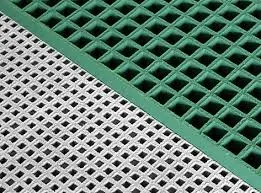
-
 Afrikaans
Afrikaans -
 Albanian
Albanian -
 Amharic
Amharic -
 Arabic
Arabic -
 Armenian
Armenian -
 Azerbaijani
Azerbaijani -
 Basque
Basque -
 Belarusian
Belarusian -
 Bengali
Bengali -
 Bosnian
Bosnian -
 Bulgarian
Bulgarian -
 Catalan
Catalan -
 Cebuano
Cebuano -
 China
China -
 China (Taiwan)
China (Taiwan) -
 Corsican
Corsican -
 Croatian
Croatian -
 Czech
Czech -
 Danish
Danish -
 Dutch
Dutch -
 English
English -
 Esperanto
Esperanto -
 Estonian
Estonian -
 Finnish
Finnish -
 French
French -
 Frisian
Frisian -
 Galician
Galician -
 Georgian
Georgian -
 German
German -
 Greek
Greek -
 Gujarati
Gujarati -
 Haitian Creole
Haitian Creole -
 hausa
hausa -
 hawaiian
hawaiian -
 Hebrew
Hebrew -
 Hindi
Hindi -
 Miao
Miao -
 Hungarian
Hungarian -
 Icelandic
Icelandic -
 igbo
igbo -
 Indonesian
Indonesian -
 irish
irish -
 Italian
Italian -
 Japanese
Japanese -
 Javanese
Javanese -
 Kannada
Kannada -
 kazakh
kazakh -
 Khmer
Khmer -
 Rwandese
Rwandese -
 Korean
Korean -
 Kurdish
Kurdish -
 Kyrgyz
Kyrgyz -
 Lao
Lao -
 Latin
Latin -
 Latvian
Latvian -
 Lithuanian
Lithuanian -
 Luxembourgish
Luxembourgish -
 Macedonian
Macedonian -
 Malgashi
Malgashi -
 Malay
Malay -
 Malayalam
Malayalam -
 Maltese
Maltese -
 Maori
Maori -
 Marathi
Marathi -
 Mongolian
Mongolian -
 Myanmar
Myanmar -
 Nepali
Nepali -
 Norwegian
Norwegian -
 Norwegian
Norwegian -
 Occitan
Occitan -
 Pashto
Pashto -
 Persian
Persian -
 Polish
Polish -
 Portuguese
Portuguese -
 Punjabi
Punjabi -
 Romanian
Romanian -
 Russian
Russian -
 Samoan
Samoan -
 Scottish Gaelic
Scottish Gaelic -
 Serbian
Serbian -
 Sesotho
Sesotho -
 Shona
Shona -
 Sindhi
Sindhi -
 Sinhala
Sinhala -
 Slovak
Slovak -
 Slovenian
Slovenian -
 Somali
Somali -
 Spanish
Spanish -
 Sundanese
Sundanese -
 Swahili
Swahili -
 Swedish
Swedish -
 Tagalog
Tagalog -
 Tajik
Tajik -
 Tamil
Tamil -
 Tatar
Tatar -
 Telugu
Telugu -
 Thai
Thai -
 Turkish
Turkish -
 Turkmen
Turkmen -
 Ukrainian
Ukrainian -
 Urdu
Urdu -
 Uighur
Uighur -
 Uzbek
Uzbek -
 Vietnamese
Vietnamese -
 Welsh
Welsh -
 Bantu
Bantu -
 Yiddish
Yiddish -
 Yoruba
Yoruba -
 Zulu
Zulu
Exploring the Benefits and Applications of FRP Tee Fittings in Construction
Understanding FRP Tee A Comprehensive Overview
Fiber Reinforced Plastic (FRP) is rapidly gaining prominence across various industries due to its lightweight, high strength, and corrosion-resistant properties. Among the various forms of FRP products, the FRP tee has emerged as a critical component for numerous applications, particularly in industries such as construction, plumbing, and chemical processing. This article aims to explore the composition, benefits, applications, and future prospects of FRP tees.
Composition and Manufacturing
FRP tees are made by combining continuous fibers—often glass, carbon, or aramid—with a plastic matrix, typically based on epoxy, polyester, or vinyl ester resins. This combination is what gives FRP its unique attributes. The manufacturing process generally involves techniques like pultrusion, which ensures the desired shape and mechanical properties. During pultrusion, the fibers are pulled through a resin bath and then through a heated die, allowing the resin to cure and harden into a solid form. The result is a lightweight structure that maintains robust mechanical properties.
Key Advantages
One of the primary benefits of using FRP tees is their exceptional corrosion resistance. Unlike traditional metal components, which can rust and degrade over time, FRP tees withstand harsh chemicals and environmental conditions without deteriorating. This reliability significantly reduces the maintenance costs associated with replacements and repairs.
Moreover, the lightweight nature of FRP tees facilitates easier handling and installation. This is particularly advantageous in high-rise construction projects or areas with challenging access. Workers can transport and install FRP tees with minimal effort compared to heavier metal alternatives, thereby increasing efficiency.
Another noteworthy advantage is their thermal and electrical insulating properties. FRP tees do not conduct electricity, making them ideal for applications in environments where electrical hazards are a concern. Additionally, they offer excellent thermal insulation, which can be beneficial in applications involving extreme temperatures.
Applications
frp tee

The versatility of FRP tees makes them suitable for varied applications. In the construction sector, they are often used in piping systems, where they connect two perpendicular pipes, enabling efficient fluid transport. Their excellent corrosion resistance is especially valuable in chemical processing facilities where corrosive substances are transported.
FRP tees are also utilized in wastewater treatment plants, where they withstand corrosive liquids and gases involved in the treatment process. In the telecommunications industry, these tees can be used in infrastructure setups like poles or supports, providing structural support while preventing electrical interference.
Moreover, FRP tees are becoming increasingly popular in renewable energy applications, particularly in wind turbines where they are used in components that require both low weight and high strength.
Future Prospects
As industries continue to lean toward sustainable practices, the demand for lightweight and durable materials is expected to rise. FRP technology is advancing, with ongoing research aimed at improving properties such as impact resistance and fire resistance. This innovation will likely expand the applications of FRP tees into new sectors and improve their existing usage.
Moreover, the growing awareness of environmental sustainability is driving manufacturers to emphasize the recyclability of FRP materials. New developments in recycling techniques could make FRP tees an even more attractive option for eco-conscious projects.
Conclusion
In summary, FRP tees represent a significant advancement in material technology, combining strength, lightness, and resistance to corrosion. Their diverse applications demonstrate their adaptability across various industries. As research and technology evolve, the future of FRP tees promises greater efficiency and sustainability, making them a crucial component in the infrastructure of tomorrow.









